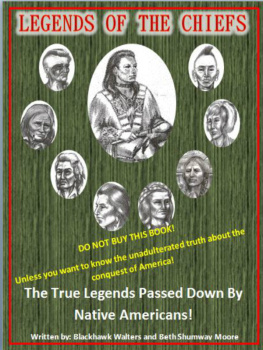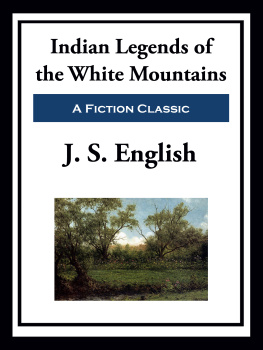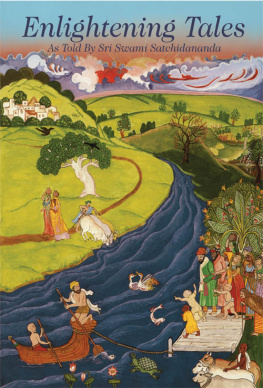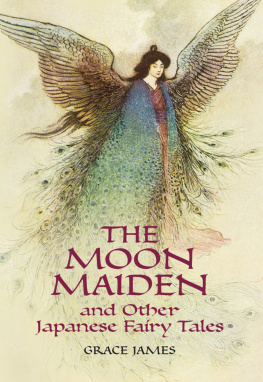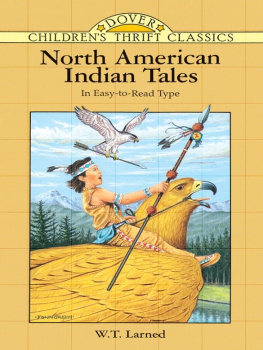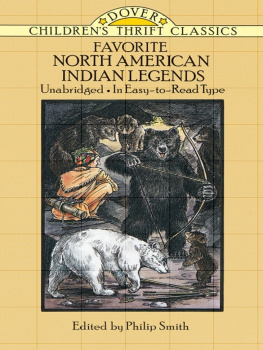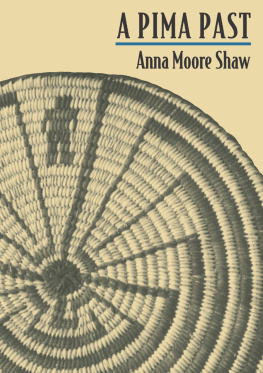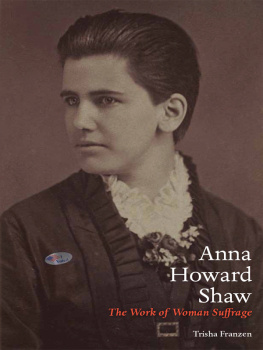Anna Moore Shaw - Pima Indian Legends
Here you can read online Anna Moore Shaw - Pima Indian Legends full text of the book (entire story) in english for free. Download pdf and epub, get meaning, cover and reviews about this ebook. year: 2016, publisher: University of Arizona Press, genre: Detective and thriller. Description of the work, (preface) as well as reviews are available. Best literature library LitArk.com created for fans of good reading and offers a wide selection of genres:
Romance novel
Science fiction
Adventure
Detective
Science
History
Home and family
Prose
Art
Politics
Computer
Non-fiction
Religion
Business
Children
Humor
Choose a favorite category and find really read worthwhile books. Enjoy immersion in the world of imagination, feel the emotions of the characters or learn something new for yourself, make an fascinating discovery.
- Book:Pima Indian Legends
- Author:
- Publisher:University of Arizona Press
- Genre:
- Year:2016
- Rating:4 / 5
- Favourites:Add to favourites
- Your mark:
- 80
- 1
- 2
- 3
- 4
- 5
Pima Indian Legends: summary, description and annotation
We offer to read an annotation, description, summary or preface (depends on what the author of the book "Pima Indian Legends" wrote himself). If you haven't found the necessary information about the book — write in the comments, we will try to find it.
Coyote, Eagle-man, quail, bear, and other charaters relate their adventures in two dozen delightful tales Anna Shaw heard her father tell when she was young. The author, a Pima herself, unfolds twenty-four charming Indian tales as passed down from generation to generation. Simple, and beautiful in design and content. A delight for all ages.
Pima Indian Legends — read online for free the complete book (whole text) full work
Below is the text of the book, divided by pages. System saving the place of the last page read, allows you to conveniently read the book "Pima Indian Legends" online for free, without having to search again every time where you left off. Put a bookmark, and you can go to the page where you finished reading at any time.
Font size:
Interval:
Bookmark:
IN ANY BOOK there are those who graciously contribute to the writing. It is to thesepeople that I wish to express my gratitude and give recognition.
The legends recorded here were told me by my late father, Josiah Moore I. The oft-repeatedlegends were most entertaining and instructive, a source of enjoyment and memories.I have fond recollections of a happy childhood, and of a patient father who toldand taught me these legends.
I am indebted to Mrs. Elizabeth Sherman Moore, who was an instructor at the PhoenixTechnical School, teaching the methods and techniques in Writing for Publication,in whose classes I enjoyed studying from 1950 to 1952, following which I receivedmy certificate of completion.
To Dr. George Walker, president emeritus of Cook Christian Training School, Tempe,Arizona, a personal friend and counselor of long standing, and a man who has beena missionary and friend to my Pima people for many years, I wish to give specialacknowledgment.
The encouragement to record these legends came from an outstanding Pima-Papago spiritualleader, and with a great deal of pride and admiration I point to Dr. Roe B. Lewis,who maintained that these legends should be written down and who deemed it a worthwhilecontribution to the generations to come.
Mr. William S. King, who graciously offered to write the Introduction, has been agood friend to the Indian for a long time. He understands the Pima better than anyother superintendent we have had at Salt River. To him go my most special thanksfor the help and encouragement he has given me and my people.
Finally, I wish to give special recognition and thanks to the others who helped makethis book possible: to Mr. Victor Manuel and his daughter, Mildred Manuel, two eminentIndian musicians who were most helpful in analyzing the manuscript; to Dr. RobertA. Roessel, Jr., of the Indian Education Center, Arizona State University, for hishelp in getting these legends reproduced in mimeographed form; to my great-nephew,Josiah Moore II, his wife, lone, and my daughter Adeline (Mrs. A. J. Russell), whocarefully typed the manuscript; to Matt Tashquinth, a fellow Pima, for his illustrationsthat add so much to the book; and to Marshall Townsend, director, and Kit Scheifele,editor, of the University of Arizona Press for their assistance, encouragement, andeditorial direction.
ANNA MOORE SHAW
Salt River Reservation
MANY OF US even some from the Indian Southwest assume that the cultures of atleast some of our Indian neighbors have all but died out. We regret this and baffleour Indian friends by exhorting them to preserve that of their tradition whichwe see as remaining. This narrow view of Indian culture is usually viewed in aestheticterms. Basket weaving, pottery making, silver work even certain of the techniquesof graphic arts taught in Government boarding schools during the 1930s are commonlyseen as just about all that is meaningful left to certain tribes. These, along withtraditional dances, fragments of music and tribal legends, we feel, should be preservedat all cost. However well- intended are these salvage efforts by non-Indians, theyare indeed arrogant in that they tell Indians which aspects of their lives (if any)are truly Indian. They are also mistaken in that they assume that elements of culturecan be preserved as one preserves the head of a buffalo through taxidermy.
But this is not an essay on the nature of culture; rather it is an introduction toa very charming collection of Pima legends. My purpose in bringing up the subjectof culture at all is to suggest that this little book shows something of the processof cultural change. For these legends, learned more than sixty years ago in the thenconservative Pima village of Gila Crossing, have been modified over the years asa reflection of changes in the cultural traditions of those who learned them. Thesechanges notwithstanding, the legends remain every bit as much Pima as the versionstold at the turn of the century. And the lady who has transcribed them is as mucha part of the same Pima cultural tradition as were her parents, and their parentsbefore them, who told the stories around countless fires on long winter nights.
Gila Crossing, the village in which Anna Moore Shaw, the youngest of ten brothersand sisters, was born, is located about thirty miles from the Pima Agency at thewest end of the Gila River Indian Reservation. Neither her parents, nor her maternalgrandparents who lived nearby in an old-style Pima grass house, spoke English. Theywere a close-knit family of Pima farmers, and their contact with the non-Indian worldaround them was minimal.
A major influence on the family was its ultimate conversion to Christianity by Presbyterianmissionaries after a long period of opposition by Mrs. Shaw's father. During thechildhood of the older children, however, and until Mrs. Shaw herself had alreadygone away to school, the major religious tradition of the family was native Pima in which the legends contained in this book played an important part.
Following young Annas initial contact with the non- Indian world in the one-roomday school at Gila Grossing, she was sent off to Government and mission boardingschools. Her education was concluded in 1920 with her being the first full-bloodedIndian to graduate from Phoenix Union High School. Shortly after, she married RossShaw, also a member of the Pima Tribe from the nearby Salt River Reservation, whohad just returned from France where he had been serving with the Arizona NationalGuard. Mr. Shaw found employment with the Railway Express Agency in Phoenix, wherethe couple settled and made their home for the next forty years.
The Shaws were one of the first Indian families to establish themselves solidly inPhoenix. They developed a wide circle of friends and Mrs. Shaw especially was activein church and civic affairs. Their three children grew up among non-Indian neighbors,although cousins and frequent visitors from both the Gila River and Salt River reservationskept them in close touch with the Indian world. A particularly stabilizing influencewas Mrs. Shaws father who lived with the family until all of the children were wellalong in school.
The stories contained in this book were told to her children by Mrs. Shaw and byher father, just as they had been told to her and to her brothers and sisters whenshe was a girl. But not in the same form. The inevitable changes that education,experience, and residence among non-Indians had on this Pima family were reflectedin the manner in which the stories were told and in the ultimate forms that theyassumed. For example, the earthy character of some, as they were told in the totallyPima atmosphere of turn-of-the-century Gila Crossing, was not appropriate in thechanged urban environment Whole elements were gradually dropped or reworded, especiallysince the stories more and more came to be told in English in which the cognate wordsand phrases sounded particularly out of place.
During an earlier period, the stories were used for instructional purposes by demonstratingexamples of personal conduct. In the city and in the changed religious atmosphereof the family, moral teaching increasingly became a function of organized Christianreligion. Likewise, telling the stories as rewards to children for learning the complexitiesof the old Pima kinship system, or committing certain of the traditional songs associatedwith the legends to memory, tended more and more to disappear.
By degrees, the stories were told to the children (and later to grandchildren) inmuch the way that fairy tales are told to non-Indian children. Even the grandfatheraccepted this change and, according to Mrs. Shaw, improvised the stories to holdthe grandchildrens attention, much to their great delight. Coyote, who plays a dominantrole in many Pima legends, for example, was dressed by the old gentleman in cowboyclothes with boots, spurs and a bright red necktie!
Font size:
Interval:
Bookmark:
Similar books «Pima Indian Legends»
Look at similar books to Pima Indian Legends. We have selected literature similar in name and meaning in the hope of providing readers with more options to find new, interesting, not yet read works.
Discussion, reviews of the book Pima Indian Legends and just readers' own opinions. Leave your comments, write what you think about the work, its meaning or the main characters. Specify what exactly you liked and what you didn't like, and why you think so.



